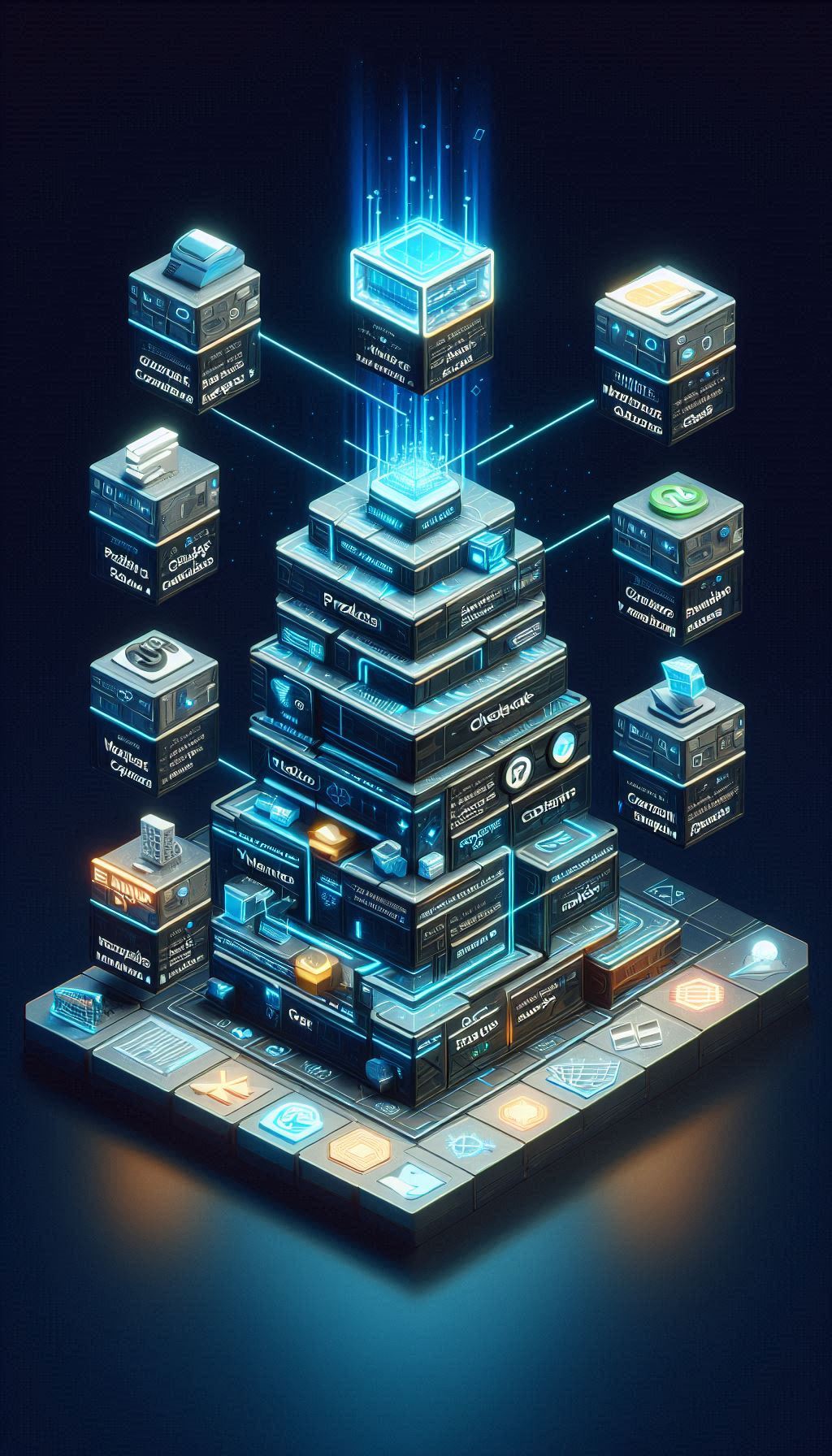
Launching an e-commerce business can feel overwhelming. Between choosing the right platform, designing the perfect user experience, integrating payment gateways, setting up shipping calculators, and planning for inventory management, it’s easy to get lost in feature creep before you’ve made your first sale.
Here’s the uncomfortable truth: most new e-commerce businesses spend too much time and money building features their customers don’t need yet.
The smarter approach? Start with a Minimum Viable Product (MVP).
An MVP isn’t about cutting corners—it’s about strategic focus. It means launching with just enough functionality to serve your customers and validate your business model, then expanding based on real data rather than assumptions.
After 15+ years of building e-commerce platforms at Vijay Software, we’ve seen firsthand how the MVP approach transforms business outcomes. Let’s explore why starting small is actually the smartest way to scale big.
A Minimum Viable Product for e-commerce is a streamlined version of your online store that includes only the core features necessary to:
- Display your products effectively
- Process orders securely
- Accept payments
- Fulfill customer purchases
Think of it as your store’s foundation—solid, functional, and ready to build upon.
What an E-Commerce MVP Includes:
- Product catalog with clear descriptions, pricing, and images
- Shopping cart functionality
- Secure checkout process
- Payment gateway integration (Stripe, PayPal, or similar)
- Basic order management system
- Mobile-responsive design
- Essential security features (SSL certificate, PCI compliance)
- Simple shipping options
- Order confirmation emails
What an MVP Typically Excludes (at first):
- Advanced product filters and search
- Loyalty programs or reward points
- Live chat support
- Complex shipping calculators
- Subscription management
- Multi-currency support
- Extensive product reviews and ratings
- Sophisticated recommendation engines
- Custom integrations with CRM or ERP systems
These features aren’t unimportant—they’re just not necessary on day one. You can add them strategically once you understand how your customers actually shop.

1. Dramatically Lower Initial Investment
Building a full-featured e-commerce platform can cost anywhere from $50,000 to $250,000+ depending on customization needs. An MVP typically costs 40-60% less because you’re only building what’s essential.
The financial advantage:
- Lower upfront development costs
- Reduced hosting and infrastructure expenses
- Minimal ongoing maintenance in the early stages
- More budget available for marketing and customer acquisition
2. Faster Time to Market
In e-commerce, timing matters. Every week you spend in development is a week you’re not making sales, testing your market, or building customer relationships.
An MVP can launch in 4-8 weeks versus 4-6 months for a fully-featured platform. That means:
- You start generating revenue sooner
- You can capitalize on seasonal opportunities
- Competitors have less time to enter your niche
- You begin building your customer base immediately
3. Real Customer Data Trumps Assumptions
Before launch, you’re making educated guesses about what customers want. After launch with an MVP, you have actual data.
You’ll discover:
- Which products customers actually buy (versus what you thought they’d buy)
- How users navigate your site
- What information they need to make purchase decisions
- Where they abandon their carts
- What questions they ask most frequently
This data is gold. It tells you exactly what features to build next and where to invest your resources.
4. Flexibility to Pivot Without Massive Losses
What if your initial product idea doesn’t resonate? What if you need to adjust your pricing model or target a different customer segment?
With an MVP, pivoting is manageable. You haven’t invested heavily in features you’ll need to rebuild or abandon. You can adjust your strategy based on market feedback without writing off a massive investment.
5. Prove Demand Before Scaling
The hardest question in business: “Will people actually buy this?”
An MVP lets you answer that question definitively with minimal risk. Once you’ve proven demand, you can confidently invest in scaling—knowing you’re building for a validated market.
Not sure what to include in your MVP? Ask yourself these questions:
1. What’s the minimum customers need to make a purchase? If a feature doesn’t directly support product discovery, decision-making, or transaction completion, it can probably wait.2. What differentiates your products? If you sell complex or technical products, detailed specifications might be essential. If you sell simple consumer goods, they might not be.
3. What’s your competitive context? If competitors offer certain features as standard, you may need them in your MVP. If you’re entering an underserved market, you can start even simpler.
4. What’s your support capacity? If you’re a solo founder, automated features like FAQ pages might be MVP-worthy. If you have a support team, you can initially handle questions manually.
5. What’s legally or operationally required? Security features, privacy policies, and basic compliance elements are non-negotiable—even in an MVP.
Different platforms suit different MVP strategies. Here’s how to think about your options:
BigCommerce – Strong built-in features reduce reliance on third-party apps. Good for businesses planning to scale quickly or handle high transaction volumes.
Magento (Adobe Commerce) – Best for complex B2B requirements or highly customized experiences. Higher initial investment but extensive functionality.
Custom Development (CodeIgniter, Laravel) – Maximum flexibility and control. Best when you have unique business logic or plan to build proprietary features that differentiate your business.
At Vijay Software, we help clients select the right platform based on their specific business model, technical resources, and growth plans—not just what’s trendy.
An MVP is a beginning, not an ending. Here’s how to expand strategically:
Phase 3: Prioritize Enhancements (Month 4) Based on data, determine which features will have the biggest impact on conversion rates, average order value, or customer satisfaction.
Phase 4: Strategic Expansion (Months 5+) Add features in order of proven ROI. Examples:
- Product reviews (if customers ask for social proof)
- Advanced filtering (if you have a large catalog)
- Subscription options (if you see repeat purchases)
- Loyalty programs (once you have a customer base to reward)
Phase 5: Integration & Automation (Months 6-12) Connect your store to CRM, email marketing, inventory management, and accounting systems as order volume justifies the investment.
Mistake 3: Neglecting Security SSL certificates, PCI compliance, and secure payment processing are MVP essentials, not nice-to-haves.
Mistake 4: Zero Marketing Plan An MVP validates your business model—but only if people see it. Plan for basic SEO, social media, or advertising from day one.
Mistake 5: Ignoring Analytics If you’re not tracking user behavior from launch, you’re missing the whole point of the MVP approach.
Some of the world’s biggest e-commerce companies started as MVPs:
Shopify started as an online snowboard store. The founders built their own e-commerce platform because existing solutions were inadequate—and that simple internal tool became a billion-dollar company.
The pattern is clear: validate the concept, serve customers, then scale based on what you learn.
With over 15 years of experience building e-commerce platforms, we understand the balance between doing too little and doing too much.
Our MVP Development Process:
- Discovery & Strategy – We identify your true MVP requirements based on your business model and target customers
- Platform Selection – We recommend the right technology stack (Shopify, WooCommerce, BigCommerce, Magento, CodeIgniter, or Laravel) for your specific needs
- Rapid Development – We build your MVP in 4-8 weeks with clean, scalable code
- Launch Support – We ensure smooth deployment and provide training for your team
- Growth Partnership – We remain available as your scaling partner, adding features strategically as your business grows
We don’t push unnecessary features. We don’t recommend expensive platforms when simpler solutions work better. We focus on getting you to market quickly and profitably.
The e-commerce landscape is more competitive than ever, but that doesn’t mean you need to build everything at once. In fact, the opposite is true.
By starting with an MVP, you:
- Minimize financial risk while testing your concept
- Learn faster from real customer interactions
- Build strategically based on data rather than assumptions
- Preserve resources for marketing and customer acquisition
- Stay flexible as market conditions change
The businesses that succeed aren’t necessarily those with the most features—they’re the ones that understand their customers deeply and serve them efficiently.
Don’t overbuild. Don’t overspend. Start small, prove demand, then expand with confidence.
At Vijay Software, we’ve helped dozens of businesses launch successful online stores using the MVP approach. Whether you’re a first-time entrepreneur or an established business moving online, we can guide you through the process.
Let’s discuss your e-commerce vision:
📞 Call us: 714-337-7762
🌐 Visit: www.vijaysoftware.com
📝 Contact form: www.vijaysoftware.com/contact
We offer free initial consultations to assess your needs and provide honest guidance on the best path forward for your business.
